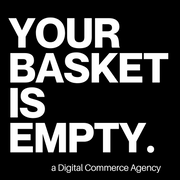Demystifying the world of Headless Commerce by unpacking the who, what, how and why with agency and tech leaders…
With Nick Raushenbush, Co-founder of Shogun 🔥
How would you describe Headless to an alien?
Ha! Interesting question. Even ecommerce merchants on earth(!) have a tough time with headless—there's so much jargon and many competing definitions out there.
But it's actually simple: headless commerce refers to when a merchant uses an ecommerce platform to run backend functions, and uses a separate, specialized tech for their frontend; the part of the site shoppers see and interact with.
What are the top three pain points Headless solves for a brand?
-
Unlocks total design control (and eliminates the design vs. site speed tradeoff): Today it’s critical that your brand delivers a differentiated ecommerce experience (think: Apple.com-esque) without compromising load times or performance. This has historically been very challenging to do. Merchandisers haven’t been able to add rich design to sites without bogging them down with code bloat and sacrificing load times. But it’s become clear that exceptional design cannot continue to compromise performance. Moving to a flexible frontend (as part of a headless solution) finally unlocks rich visual merchandising and you can reap the speed benefits progressive web app (PWA) technology offers with select vendors. With a headless PWA you get sub-second page load times that boost mobile conversion rates.
-
Helps with content management, at scale: There is an undeniable need to go beyond the basic CMS functionality of metafields, especially for multi-site/multi-store capability. Brands are looking for complex, site-wide content updates, faster. When you go headless, you can scale a high-volume of collections/content on your storefront, and (pending your vendor) you also gain the flexibility to arrange your content management or CMS however you like. Ultimately, when your site has headless architecture, there are often fewer barriers to the internationalization of your store (multi-language and currency become much easier to execute).
-
Enables your web teams to execute quickly: To influence revenue via promotions quickly, better web workflows are needed. Empowering your non-technical team members to iterate on site updates fast is key to competing at pace, all while keeping developer costs and reliance down. If you implement a flexible frontend that’s low-code, you can give control over the shopping experience back to your team.
When is a good time for a brand to consider a move to Headless?
A few questions you could consider as you explore your online storefront strategy and readiness for headless for the remainder of 2022 and beyond include:
-
How are we differentiating our web experience from our competitors? How are we delivering differentiated shopping—start to finish—that makes our brand memorable/engaging/etc.
-
Are we constrained by the out-of-the-box features in our ecommerce platform for visual merchandising (content creation) and content management (metafields)?
-
Are even a couple additional seconds of load time costing us a considerable amount of money?
-
Are we staying agile? Are we future-proofing our tech stack in how we optimize the storefront?
-
Do our (non technical) team members feel empowered to iterate on our site to impact revenue quickly?
-
Are we amassing considerable developer costs for simple store changes / updates?Are product launches delayed due to constraints?
How does your agency or tech fit into the Headless ecosystem?
The typical path to headless flexibility (with its DevOps, middleware, and multiple licenses) is very slow and dev-focused. With Shogun Frontend though, you can say goodbye to cost, complexity, and multiple vendors for faster time to value thanks to:
-
A visual experience manager. An industry first, the visual experience manager is the core of the platform—empowering low code PWA frontend store creation.
-
A Native Content Management System (CMS). Designed intentionally for ecommerce, Shogun Frontend’s CMS is the central source of truth for your content, simplifying workflows and improving efficiency.
-
Low-code creation tools for a more efficient business. With pre-built templates, sections, and reusable code, brands can get a head start on a store that balances shopper expectations and performance.
-
Progressive Web App (PWA) Technology. Transform your site output to become entirely different to a traditional website. PWA tech helps you deliver exceptional site speed, for more conversions.
What’s your go-to Headless stack?
Shogun Frontend and the ecommerce platform of your choice.
What factors do you see contributing to the recent popularity or ‘buzz’ around headless?
Before diving into the pain points that headless addresses, I think it’s worth taking a look at the factors that contributed to headless’ sudden rise in popularity among scaling SMBs all the way to mid market and enterprise brands.
-
Shopper expectations for richer online experiences (especially on mobile devices) increased rapidly over the past two years.
-
Technology emerged to address mobile experience pain points (e.g. the progressive web application framework).
-
Ecommerce platforms like BigCommerce and Shopify embraced rising interest in headless technology, and opened their platform to third-party providers.
-
COVID-19 caused ecommerce to surge, accelerating the need to optimize online channels.
-
Venture capitalists took notice of all the aforementioned, and started funding tech companies aggressively. Funding was converted into go-to-market dollars, and the "headless" term started showing up everywhere (in many cases to leverage its popularity).
Thanks, Nick 🙏
